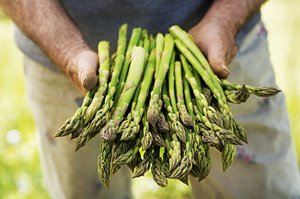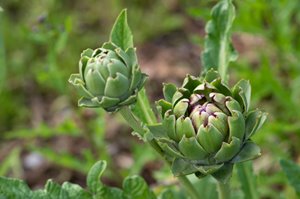Do you find that you’re constantly planning out how you’ll start your allotment from scratch after this year’s crops are finished? If so, it might be time to consider planting perennial vegetables, fruits and herbs.
Whether you’re a gardening novice trying to work out the best approach or you’ve been planting your own crops for a while and feel you need to make things a little easier, perennial vegetables are a great option.
Want to find out more about easy perennial vegetables? Read our guide to help you get started.
What are perennials?
A perennial is an all year round plant that returns year after year. Unlike annuals, which need to be planted every year, perennials are planted once and then they will come back with a harvest of crops for you to enjoy again and again.
Some perennial vegetables and fruit come back a few years in a row, while others can produce a harvest for decades.
 Why grow perennials?
Why grow perennials?
There are several reasons why you might be thinking of adding in perennials to your allotment or polytunnel. First, growing fruit, herbs and vegetables that are perennials is usually lower maintenance than planting annuals that need to be tended to each year.
Perennials are also generally hardier than annuals. They can fend off pests and diseases and they tend to not need as much attention in terms of feeding and watering.
Another reason to plant some perennial vegetables is that they can extend your harvest period, so you should always have something tasty to eat.
What vegetable plants are perennials?
While fruits and herbs tend to be perennials, the majority of vegetables are annuals. There are a few options if you’re looking to plant perennial vegetables, however.
If you’re planning on introducing these, it’s worth taking some time to work out which vegetables that grow all year round you’d like to plant and how you’d like to add these to your current set-up.
So, which plants are top of the perennial vegetables list? Here are some to try in your vegetable patch.
Asparagus
There’s nothing quite like buttered asparagus to elevate a dish. These tasty all year round plants are ready for you to harvest two years after you’ve planted a one-year-old crown, so it takes some time to build up a crop. Hang in there though, as once you’ve had your first lot, you could end up with an annual crop for as many as 20 years.
 Artichokes
Artichokes
There are two types of artichoke that you could try planting as part of your round of perennial vegetables:
Jerusalem – These are grown for their tubers, which you can harvest from November and eat either raw or cooked. You can go on to plant the tubers the following spring.
Globe – You’ll need to cut the flowerheads of these artichokes before they open.
Onions
If you’re looking for perennial onions, the Egyptian walking onion is the one to plant. This produces bulbils, which fall off and grow new plants of their own accord. The bulbils will eventually form shallots, which are the part of the plant that we eat.
As with any type of vegetable patch, you’ll need to carefully plan out where you want your perennial vegetables to go. However, once they’re in place, you’ll find that you have harvests to enjoy for many years to come.